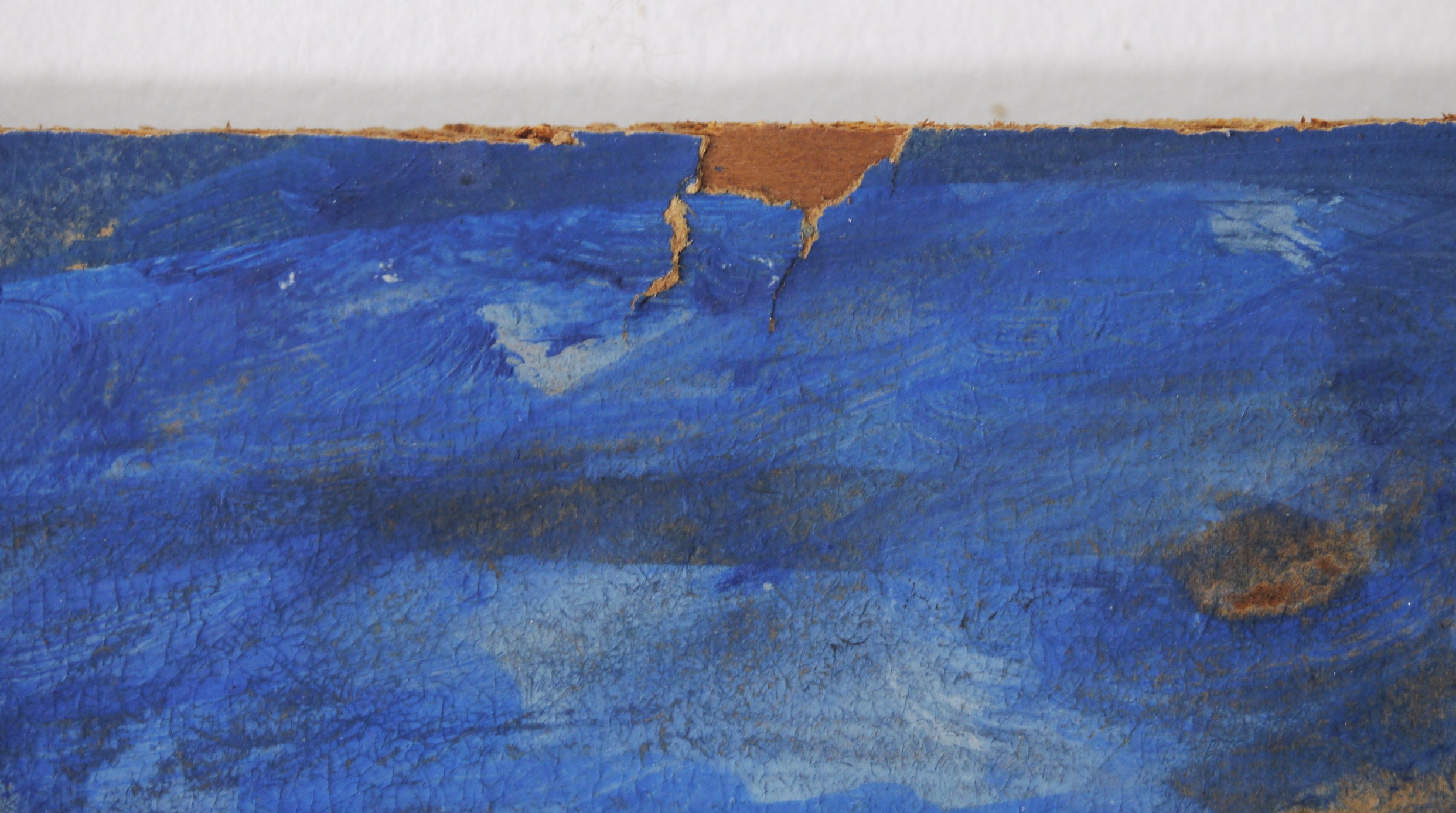Lambton 149 Battalion, panorama photograph, before and after conservation treatment.
As we work our way through the centennial years of the First World War, archives and museums across the country are showcasing items from their collections that relate to Canada’s role in the conflict. This is a wonderful opportunity to show respect for our past and educate younger generations about the impact of war; as these collections are being dusted off for exhibition, it is also the perfect opportunity to provide artifacts with much-needed conservation attention.
A WWI battalion panorama photograph recently came to Book and Paper Conservation Services for treatment from the Lambton Heritage Museum in Grand Bend, Ontario. Like many oversize and awkwardly shaped items, the panorama photograph had been stored rolled for much of its life. Age and exposure had caused the paper to become brittle, and the photograph was inclined to stay in its rolled configuration. Any attempt to unroll it caused stress to the materials, and several breaks had already occurred in the first several inches of the panorama when the brittle paper had been forced open.
Breaks in the brittle photograph caused by rolling.
This meant that the image could not be accessed at all; although cataloguing records noted that it was an image of the Lambton 149th Battalion taken in 1916 at Camp Borden, Ontario, the details of the soldiers and their surroundings could not be studied.
According to Andrew Meyer, Corporate Cultural Officer of Lambton County Museums, the Lambton 149th battalion panorama photograph was donated to Lambton Heritage Museum by a community member, and it is the Museum’s only copy of the photograph. The photograph is important to Lambton County’s history, and conservation treatment was necessary for it to be accessed and appreciated by a wider audience.
After the panorama was brought to the Book and Paper Conservation Services studio, it was carefully examined and a treatment proposal was submitted to the museum. The photograph needed to be humidified to allow unrolling, and the breaks to be repaired. With the museum’s approval, treatment began at the studio.
Humidification allowed the panorama to be gently unrolled without causing further damage.
Humidification in several stages allowed the panorama to be gently unrolled without causing further damage to the photograph. After flattening between blotters for several days, it was returned to an even, planar state with no inclination to roll back up.
Surface cleaning removes a significant amount of grime, brightening the image.
Once the image could be fully accessed, the photograph was gently surface cleaned to remove loose dirt and grime. It may not have appeared grimy, but many years of dust and dirt had accumulated on the surface and cleaning yielded quite an improvement. The soiling was present over the entire surface, but was concentrated at the side of the panorama exposed at the open end of the roll.
Ready to begin tear repairs on the verso of the photograph.
Next, repairs began on the breaks in the substrate. Japanese tissue and wheat starch paste, stable and reversible materials favoured by paper conservators for repairs, were used to mend the breaks and reattach the loose fragments.
Consolidating the surface of the emulsion.
After each tear was repaired, the photograph's emulsion was consolidated to strengthen the area and restore continuity to the surface. Small losses were inpainted with watercolours and coated to restore the surface gloss.
One final humidification and flattening helped to ease the distortion caused by the tear repairs, and then treatment was complete. The process was very successful, achieving the goals of restoring access to the image and repairing the damage it had suffered over the years.
The Lambton 149 Battalion Panorama, after conservation treatment.
The year 2017 marks the centennial of the Lambton 149th Battalion’s deployment from Halifax Harbour, and the Lambton Heritage Museum has planned several initiatives to celebrate this anniversary. The photograph is included in an exhibition currently on at the Judith and Norman Alix Art Gallery (JNAAG), entitled Lambton at War. The exhibition, focusing on Lambton county’s contribution to the war and the impact of the conflict at home, accompanies a traveling exhibition from the National War Museum, Witness: Fields of Battle Through Canadian Eyes, and runs until January 7, 2018.
Book and Paper Conservation Services is very pleased to have been part of this project, and we encourage you to check out the exhibition at JNAAG and the Lambton Heritage Museum if you are in the area!
If you have historic or archival items that you are interested in having conserved, get in touch with us today to learn about our services. Or, check out our gallery section to see more conservation treatments of archival materials like documents and photographs.
















































